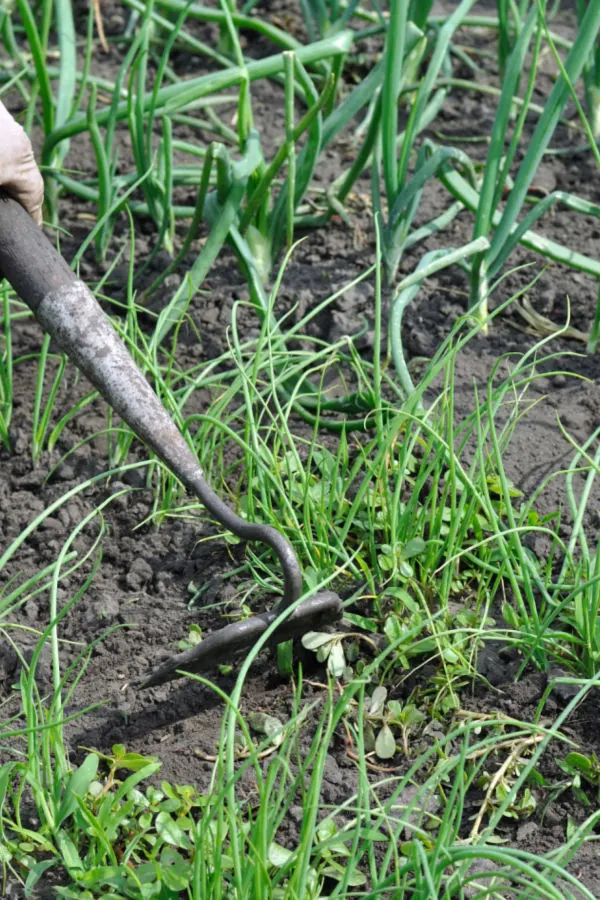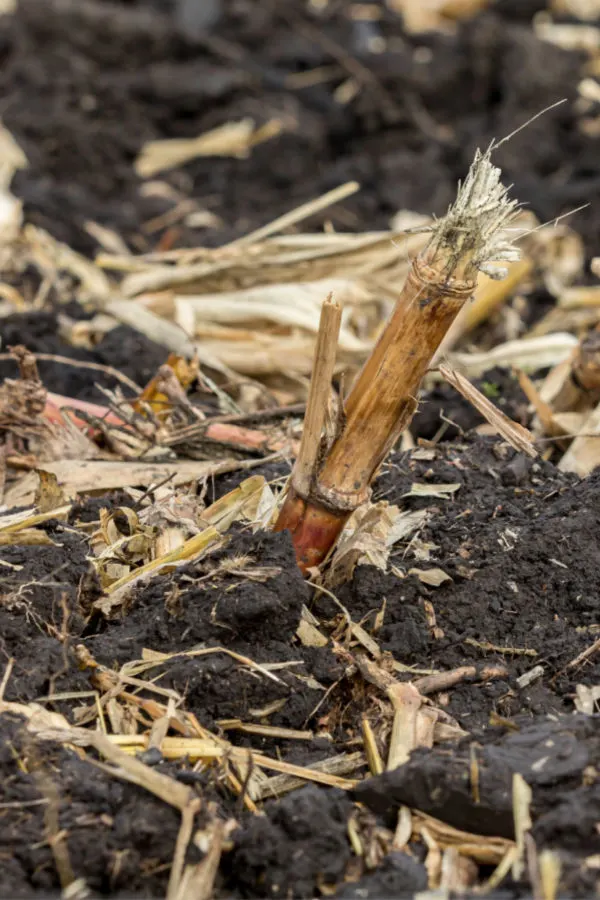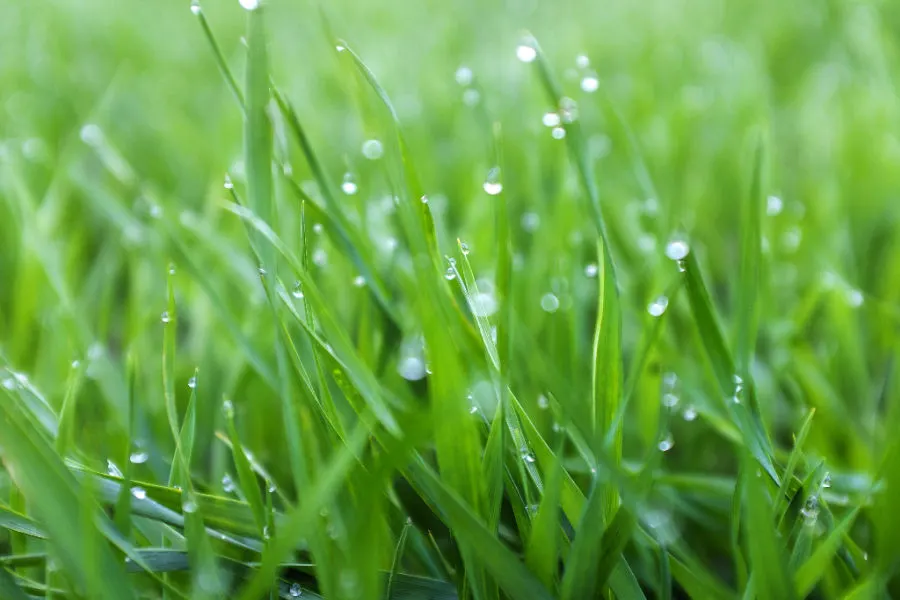It’s a plain and simple fact – there is no better way to stop weeds in your garden than by planting a fall cover crop!
Not only will a cover crop wipe out any weeds you might have growing now – but it will also set the stage for a weed-free gardening experience next year. One that will have you singing the praises of cover cropping forever!
For us, there is little doubt that cover crops are one of the biggest keys to gardening success. They help to recharge your garden’s nutrients levels, lead to better soil structure, and help control pests and disease as well. But even better than all of that – they can put a stop to the endless cycle of weeding!

Here is a look at how cover crops can stop weeds in your garden, and when and how to plant them. Be sure to check out the planting video and our podcast links within the article for even more info on cover crops!
How A Fall Cover Crop Stops Weeds – The Benefits Of A Fall Cover Crop
A fall cover crop is a must for a great garden. It not only replenishes minerals and stops erosion, but it also loosens the soil, making it easier and easier to work. But most of all, it helps to eliminate existing weeds – and future weeds too.
How does a no-till cover crop end weeds and future weeding chores? As a cover crop grows in the fall, it’s thick, lush growth snuffs out existing weeds. All with a planting effort that takes mere minutes!
When using a cover crop such as annual (cereal) rye or oats, the foliage grows thick and tight. (See: How To Plant Annual Rye, The Best No-Till Fall Garden Cover Crop Of All!) As it does, it overtakes existing weeds, wiping them out in the process.
Even better, the dense foliage also helps protect your soil for the rest of the fall, winter and early spring from new weeds seeds finding a home in bare soil. And it is those weed seeds that are the culprit for next year’s weeding problems!

But perhaps best of all, the cover crop that is providing all of this amazing weed protection is also loosening your soil with its deep roots. It will also re-energize your soil as it breaks down next year. Talk about a win-win!
When To Plant – How To Stop Weeds With A Fall Cover Crop
Cover crops can be planted as soon as your garden or even a portion of your garden has completed growing its crops for the season.
We plant our raised garden rows in a cover crop as each crop or row finishes. Some rows, like our beans, are planted in early August. Other rows that have crops that finish a bit later (such as heirloom tomatoes and peppers), are planted in late September.
This method of cover-cropping “as you go” is great for several reasons. First, it makes the chore simple and manageable for the gardener. After all, it only takes a few minutes to clean out and plant a row in a cover crop.
But more importantly, it also keeps any soil space from ever being exposed for any length of time. Plain and simple, bare soil is an open invitation for weed seeds to find a home. And when they do, they become next year’s weeding chores lying in wait.
Listen In To Our Podcast Below On How To Plant A Cover Crop!
Planting A Fall Cover – The How
So how tough is it to plant a cover crop? Well, it couldn’t be easier! There is no need for heavy digging or tilling of the soil. All you really need to do is scratch the top of the soil with a rake, and sow your seed directly on the soil.
Seed should be sown fairly thick, much like you would as if you were planting grass seed. Then, simply rake the soil lightly to set the seed in place.
The seed does not have to be completely covered by the soil. The final raking simply sets it in place to germinate better. Next, cover with a light coat of straw (1″) and water in if the soil is extremely dry. The straw helps keep the soil covered until the cover crop germinates. It also has the added benefit of holding moisture in for the cover crop.
Cover crops are extremely durable and near-drought proof, so there is little need for watering after planting day. In fact, we often skip watering in the crop if rain is in the forecast in the next few days after sowing our seed.
What To Plant As A Fall Cover Crop
So what is the best selection for a cover crop? There are two main choices we love to use for fall planting – annual (cereal) rye and oats. Both germinate quickly and fill in fast. Even better, there is no need to till in either of them next spring!

Oats will die off with the first hard frost or freeze. They will still provide protection with their thick foliage, and will slowly decay by late spring. At that point, you can plant right through the crop without having to till – which, by the way, is the biggest weed planter of all. See : Why Not To Till Your Garden This Fall!
Annual rye is by far our favorite choice of all. It works wonders in completely smothering weeds and weed seeds. In addition, the rye contains an extensive network of roots that help to loosen soil underneath. And if that wasn’t enough, those roots fix nitrogen levels in the soil so that next year’s crops will have it readily available.
Annual Rye will actually come back to life in the spring. But by mowing it off a few times, it dies off, and you can plant right through it. Once again, without ever having to till your soil.
Annual rye seed will usually germinate within 7 to 10 days. As long as you plant your cover crop least 3 to 4 weeks before your first hard freeze, it has enough time to become established to protect the soil.
Make Sure You Get The Right Rye! How To Stop Weeds With A Fall Cover Crop
One note on using annual rye, and it is an important one for sure! Make sure you are purchasing true cover crop annual rye seed. Its official name is Secale Cereale. Cereal rye is actually a grain, and not a perennial or annual grass seed. Product Link : Winter Rye Grain Seed
Here is to planting a cover crop in your garden this year, and stopping the endless cycle of weeds forever! Happy Gardening – Jim and Mary.
